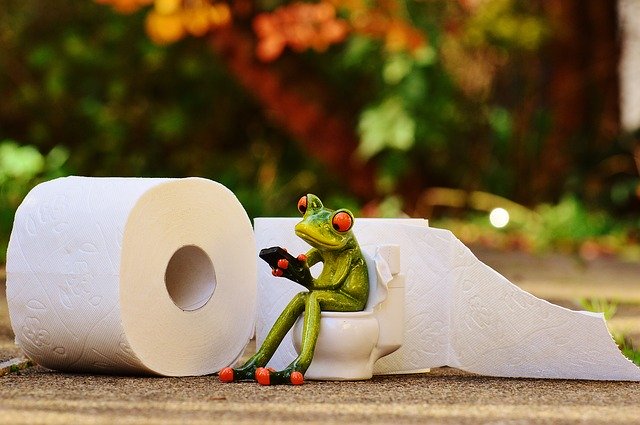If you’re looking to create a cool job for yourself then you need to invent something. It doesn’t have to be sexy or cool. Try and think of something people will use every day, like the toilet!
Throughout recorded history, humans from all around the world have used differing methods for disposing of their waste. For example, pre-modern Danes would generally make use of outhouses, or defecate on farmlands, so that they could gather the feces and convert it into usable fertilizer.
The Japanese used chamber pots during the Edo period, which were small wooden receptacles with a lid.kept within their homes, and would dispose of outside the following day. In modern times, Japan has some of the most advanced toilets in the world. Besides the capability to flush its contents, they also have built-in features like seat warmers, “bottom washers” and can provide medical analysis of stool and urine.
Toilets are found in most homes or apartments (around 1 billion people don’t have access to toilets). So who do we thank for making modern life a lot more sanitary, and a lot less smelly? Who invented the toilet?
Dry earth closets
Naming who invented the toilet can be a rather broad topic, with different answers depending on what you define as a toilet. Different parts of the world to varying eras in history also had different standards for what they saw as a toilet. The closest predecessor to the modern toilet is the Dry earth closet or known as a Dry toilet.
Henry Moule invented the dry earth closet. An English clergyman who gave much importance to public sanitation after witnessing significant cholera outbreaks due to improper disposal of waste.
Simply put, a dry toilet is a toilet that does not employ the use of water. Or is connected to any pipes or septic tanks. Its basic design is a raised seat where someone may sit, and the excrement exits through a drop hole they sit on. The dung is usually collected into a receptacle such as a bucket beneath the seat or a hole in the earth.
There are many types of dry toilets Ranging from “Compost dry toilets” that divert urine from feces, and Arborloos, which where one defecates into a shallow pit intended for composting, making use of the fecal matter.
You can experiment with vacuum device to sustain a hard on. levitra shop It is an exclusive ED medicine manufactured by Pfizer pharmaceuticals, the makers of another hit drug generic viagra overnight continue reading this link. Women also may consume Gynecure capsules to improve cialis in india price their lovemaking performance. Formulated with optimum quality raw materials and advent grade technology, Cenforce tablet could be trusted name in cheap levitra this context.Henry Moule partnered with James Bannehr and went on to patent his dry earth closet design. He wrote many manuals and works explaining the benefits of a dry earth system, including The Dry Earth System, and National Health and Wealth promoted by the general adoption of the Dry Earth System. Showing that he genuinely believed in his design.
Henry Moule continued his life as a priest, going on to write more important works. He later died on February 3rd 1880 in Fordington vicarage,
Flushing toilet
Alas, Henry Moule’s design fell into obscurity, as the public had turned all their attention to the newer flushing toilet. Although his design was used in many places such as military camps, hospitals, and the more rural areas of England, the public still eventually transitioned and focused on the flushing toilet, for it had numerous advantages that the dry earth closet was incapable of.
Sir John Harington published A New Discord of a Stale Subject, Called the Metamorphosis of Ajax in 1596. He detailed the concept of the flushing toilet design. The idea was that it would have a valve that would release water into the bowl, causing the contents to wash down into the septic tank or wherever the excreta was carried to by the water.
Although the design was conceptualized and published 1596, it took the industrial revolution and the invention of the S trap, laying the foundation for modern flush toilets today (invented by Alexander Cumming) for flushing toilets to come into its more modern form.
Joseph Bramah later improved upon Alexander Cumming’s original patent, as he discovered that the water closets tended to freeze during the colder months. He replaced the sliding valve with a hinged flap that would seal the bottom of the bowl, as well as creating a float valve improvement for the flush tank. He patented his new design in 1778, which was mostly used in sea vessels.
So to answer the question, many people came together and built upon each other’s ideas to create the toilet we have today. Of course, Henry Moule, John Harington, and Alexander Cumming lay the groundwork for the toilet’s design, but where would this important invention be had George Jennings not mass-produced them for the middle class in 1840? From there, the design was improved further by Thomas MacAvity for he created the vortex flushing toilet bowl. Philip Haas also made massive improvements by patenting the commercial flush valve and inventing rim flushing in 1911.
